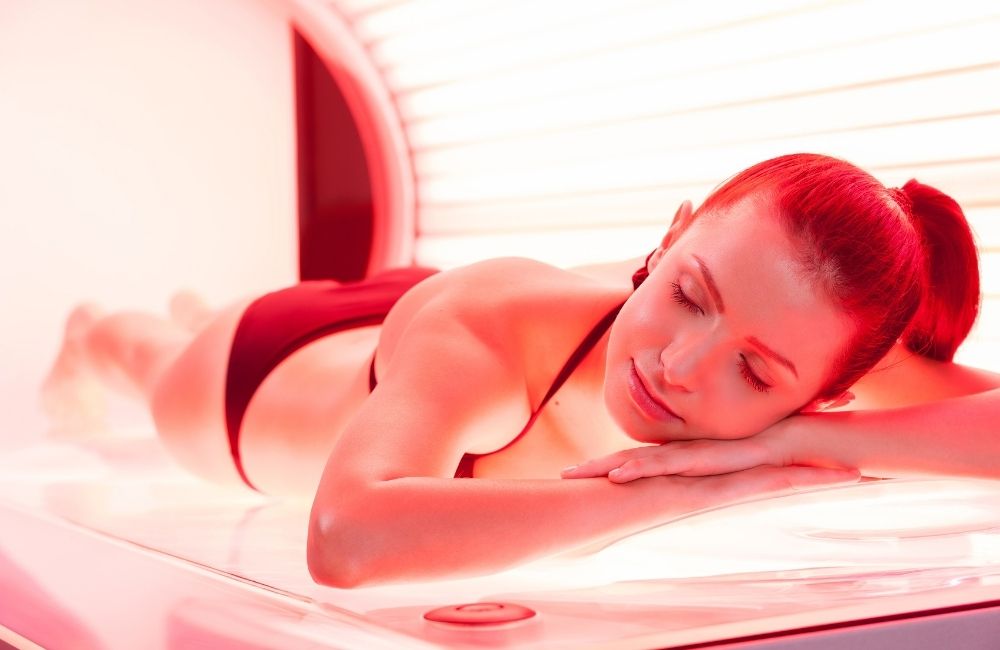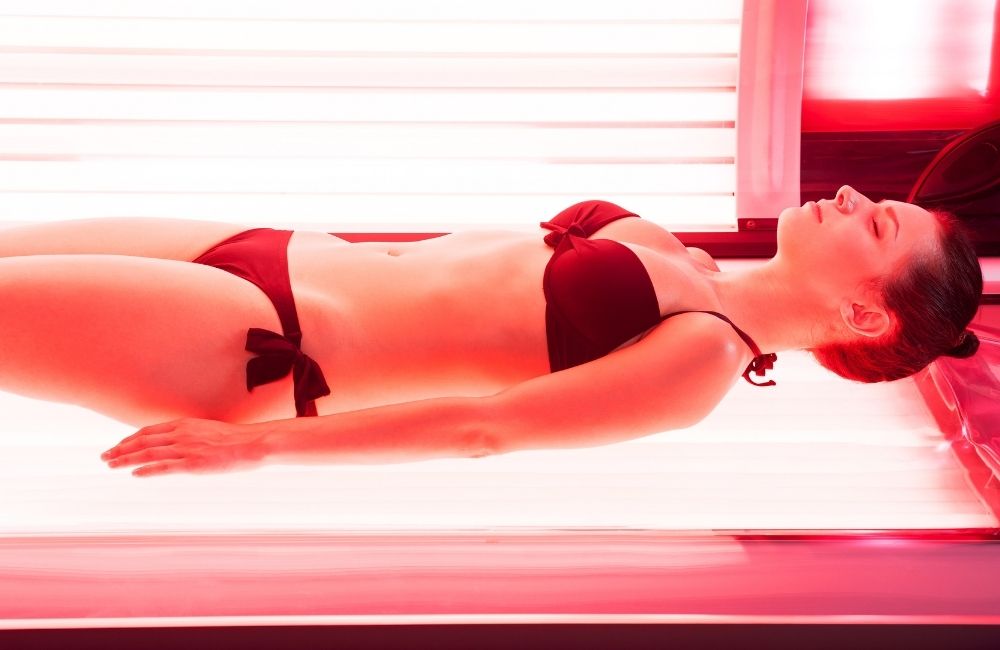Are you constantly looking for ways to revive your skin and achieve a beautiful glow? Then you should definitely try an infrared tanning bed.
Don’t let the word “tanning” throw you off, though. Infrared tanning beds may sound and look like regular tanning beds, but they serve a completely different purpose.
An infrared tanning bed doesn’t expose the skin to UVA/UVB rays, nor does it darken the skin.
Infrared tanning beds are designed to help treat versatile skin conditions, improve texture and appearance. Do they really work? We dove into the science behind infrared tanning beds, and here’s what we found out:

Contents
It All Started With NASA
In the early ‘90s, NASA (National Aeronautics and Space Administration) started researching various ways that could help astronauts grow plants in space. Red light and infrared light were one of the technologies the scientists observed. After some time, they found out that exposure to red and infrared light wavelengths promoted rapid plant growth and stimulated photosynthesis. But this was not the most notable finding.
Scientists who were involved in the research and had direct contact with the light noticed that the quality of their skin improved drastically. This led to continued studies on red and infrared lights to observe the benefits that light therapy could bring to humans. This is how red light therapy was born.
What is an Infrared Tanning Bed?
There are several ways of getting red light exposure, and infrared tanning beds are one of those. The bed usually consists of large LED lights that emit light waves between 650nm-850nm. An infrared light bed does not produce any heat. Therefore, you cannot feel anything during the session. A single session can last up to 20 minutes, and the specialist will probably recommend you to get those 2-3 times a week to see results.
This red light therapy treatment is widely available in esthetic salons and dermatologist’s offices. One of the great things about RLT beds is that they are an easy and convenient way to get maximum light exposure on your whole body.
The Science Behind Red Light
When it comes to red light therapy, many people are skeptical about it at a glance. After all, how effective can laying under some red lights be? Well, it turns out very, and here’s why:
As we’ve mentioned above, infrared light beds use light wavelengths between 650nm-850nm. This range on the visible light spectrum belongs to red and infrared rays. Unlike other types of light, red and infrared ones can reach deep layers of skin and affect cellular processes.
According to a research by Journal of Photochemistry and Photobiology, red light therapy optimizes mitochondrial metabolism, which leads to increased ATP production. As an energy-carrying molecule, ATP fuels all cellular functions. Therefore, with more ATP, each of our cells is getting more energy and doing their job much more efficiently. This leads to improving our blood circulation, immune system, and healing properties, resulting in all the fantastic benefits red light therapy has on us.

Infrared Tanning Bed Benefits
The list of infrared tanning bed benefits is quite long. Below we discuss a few of the most prominent ones.
Anti-aging
As we grow old, our skin becomes weaker, and wrinkles and fine lines start to appear. One of the reasons is decreased collagen levels. Studies have shown that red light therapy increases collagen production, which helps with aging signs.
What’s more, red light exposure boosts cell turnover rate, which lowers gradually as we age. Red light therapy promotes the formation of new cells that take the place of old damaged ones. As a result, you get firmer, more youthful skin.
Scarring
Scarring is a part of a natural healing process. When our skin is compromised, collagen production goes overdrive, creating scar tissue. The application of red light therapy to the scar, regulates collagen levels. Moreover, new blood vessels emerge near the skin surface, supplying all the necessary nutrients for promoting healthy skin.
Acne
Research shows that red light exposure can be effective for treating mild to moderate acne. Red light particles have antioxidant and anti-inflammatory properties. This is essential for avoiding the spread of acne bacteria and easing the inflammation.
Additionally, continuous red light therapy sessions help promote rapid healing and avert the formation of acne scars.
Psoriasis
Psoriasis is an autoimmune skin condition that has no cure. Because of this, psoriasis patients require ongoing treatment and monitoring. The disease presents itself in red patches on the skin surface that are often covered with white-silverish scales.
Red light therapy proves to be effective for healing psoriasis patches quickly and seamlessly. What’s more, continuous treatments help avert future flare-ups or make them more manageable.
I love my infrared tanning bed, trying to implement into my chiropractic practice to help people with certain issues, any advice?